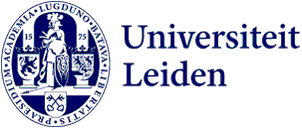
How we’re setting Academia in Motion: by promoting and developing open educational resources
‘I’m setting Academia in Motion by promoting and developing Open Educational Resources (OERs) to enable affordable learning for anyone, and to keep learning and education in the hands of universities and schools,’ says physician, anatomy teacher and e-learning developer Paul Gobée.
Open Educational Resources (OER) are freely accessible, openly licensed teaching and learning materials that can be used, adapted and shared by anyone.
AnatomyTOOL, a platform that offers thousands of free anatomical images, 3D models and learning materials, is one of the resources he’s created with colleagues. Then there are his openly available YouTube videos which reach thousands and coming up: an open source anatomical 3D model. Paul’s mission? To make knowledge accessible to everyone.
Why should we make educational materials freely available?
‘Knowledge and education are vital for societal development. Since it’s virtually free to distribute knowledge thanks to the internet, I feel that everyone, as much as possible, should have access to existing knowledge. This shouldn’t be blocked by commercial interests.
‘For students, the cost of study materials can be a barrier. Free materials can help students, and some research suggests this may reduce drop-out rates. Furthermore, educational institutions are increasingly dependent on large commercial educational platforms that are costly and collect student data. Using OERs gives institutions control over their materials, protecting academic freedom and access to public education, unhampered by commercial interests. There is more. Doctors can easily get and use images to explain something to their patients. Students in the Global South can get access to quality learning materials.
’For teachers, creating something others can learn and benefit from is rewarding. One of my models was made into a video series. It’s been viewed 240,000 times by people all over the world. Several commenters said: “I finally understand it!” That’s wonderful, and great exposure for the university – not just for me.’
Why aren’t more OERs used or shared at the moment?
‘OERs are still incomplete and not yet well organised, making them hard to find. Sharing materials can also be a lot of work for teachers. Policies promoting OER are often not yet in place. Teachers need incentives to use or create open materials. Traditionally, (sharing) research has been rewarded but teaching far less so. A great first step is that, since early 2025, Leiden University and LUMC have had a policy (Dutch, English) that allows teachers to publish materials under a Creative Commons license. That removes an important barrier!’
How can we encourage teachers to create and share more OERs?
‘If educational publications – like readers, manuals, teaching materials and videos – were counted as official publications, or as a way of creating societal impact, they would be more appealing for teachers to create. It could also give teachers an opportunity to diversify their career, something that’s been needed for a long time. I hope there will be better recognition and reward of this type of work in future. Several Dutch universities already publish open textbooks at their university press. The bottom line is that teachers need support. They need access to facilities such as repositories and they need to be backed by policies.’
If a teacher wants to get started with open educational materials, what advice do you have?
‘To find OERs, look at the links on the University Leiden Library page on Open Educational Resources. Leiden University’s and the LUMC’s new policy means you can now also share the learning material you made openly online and apply an open license to it. You can share your ready learning materials – so your readers, manuals or images – by uploading them, for instance, to SURF Sharekit and making them findable on SURF EduSources. To create online books and textbooks with questions you can use ‘Wikiwijs Maken’. For finding or sharing anatomical material, use AnatomyTOOL. This will ensure everyone can find it. If you upload it in an editable format, other teachers can edit it too. That makes it even more useful to others.’
If you want to know more about this or would like some help, you can email Paul at: o.p.gobee@lumc.nl. To learn more about his work, see Paul’s profile page. You can also check out the University Leiden page on Open Educational Resources.
How we’re setting Academia in Motion at Leiden University
This interview is part of a series highlighting the various actions colleagues are taking to support culture change at Leiden University. Together we are becoming an open knowledge community, closely connected to society, that recognises and rewards everyone’s contribution to our strategic goals. Curious? Visit the Academia in Motion website.
